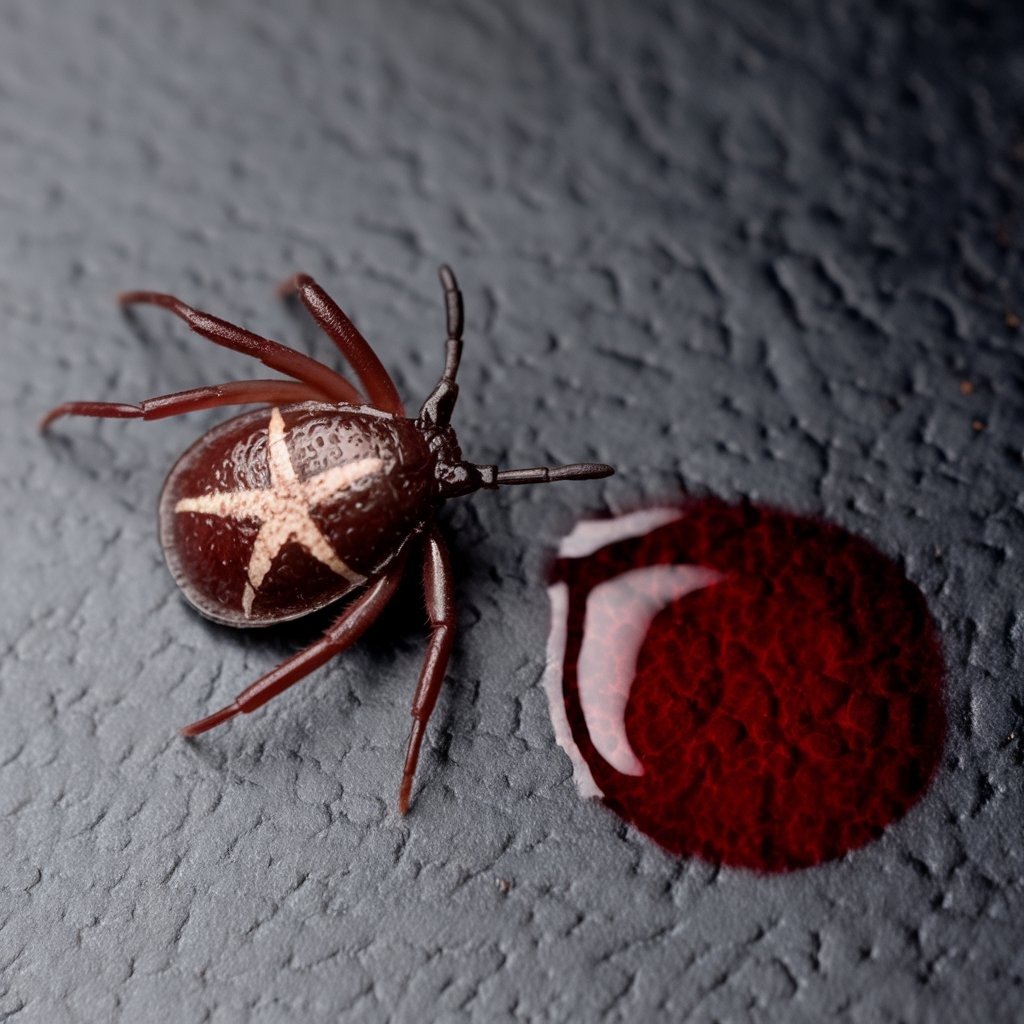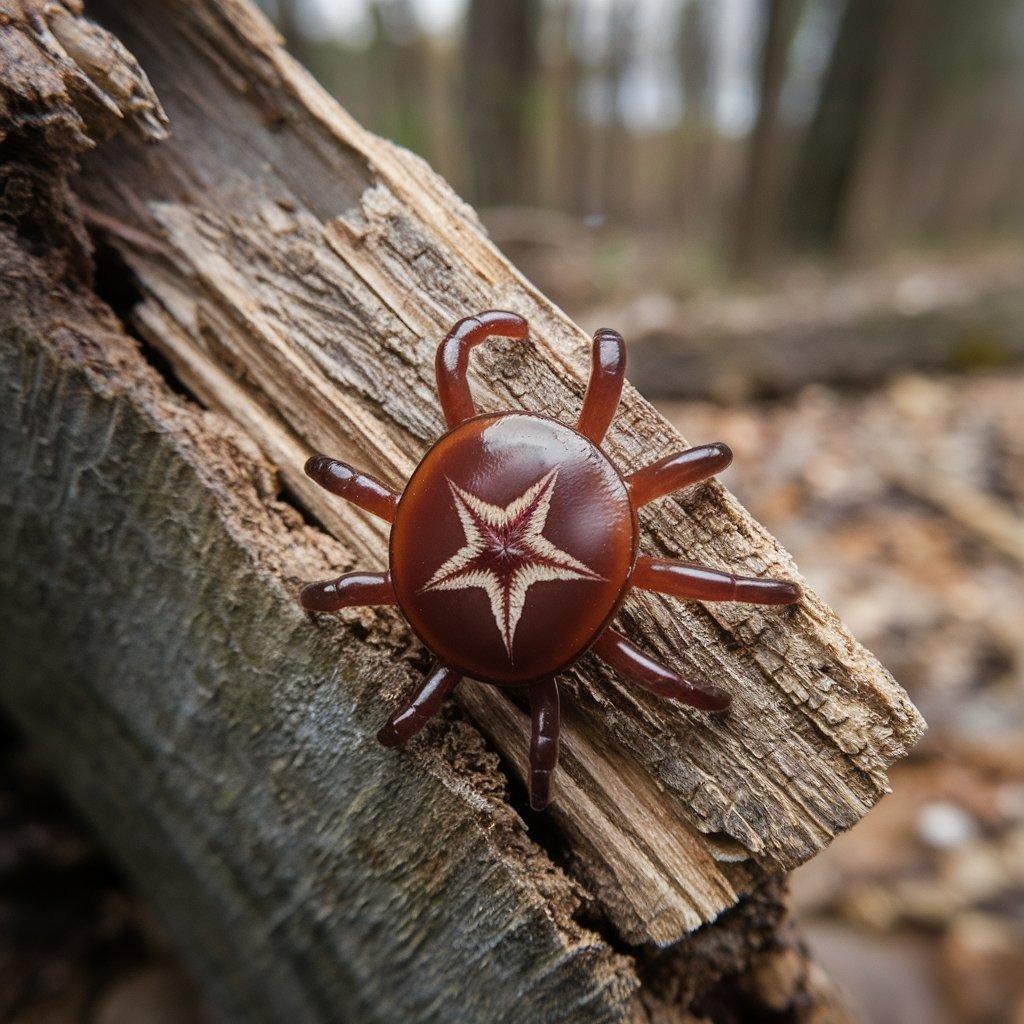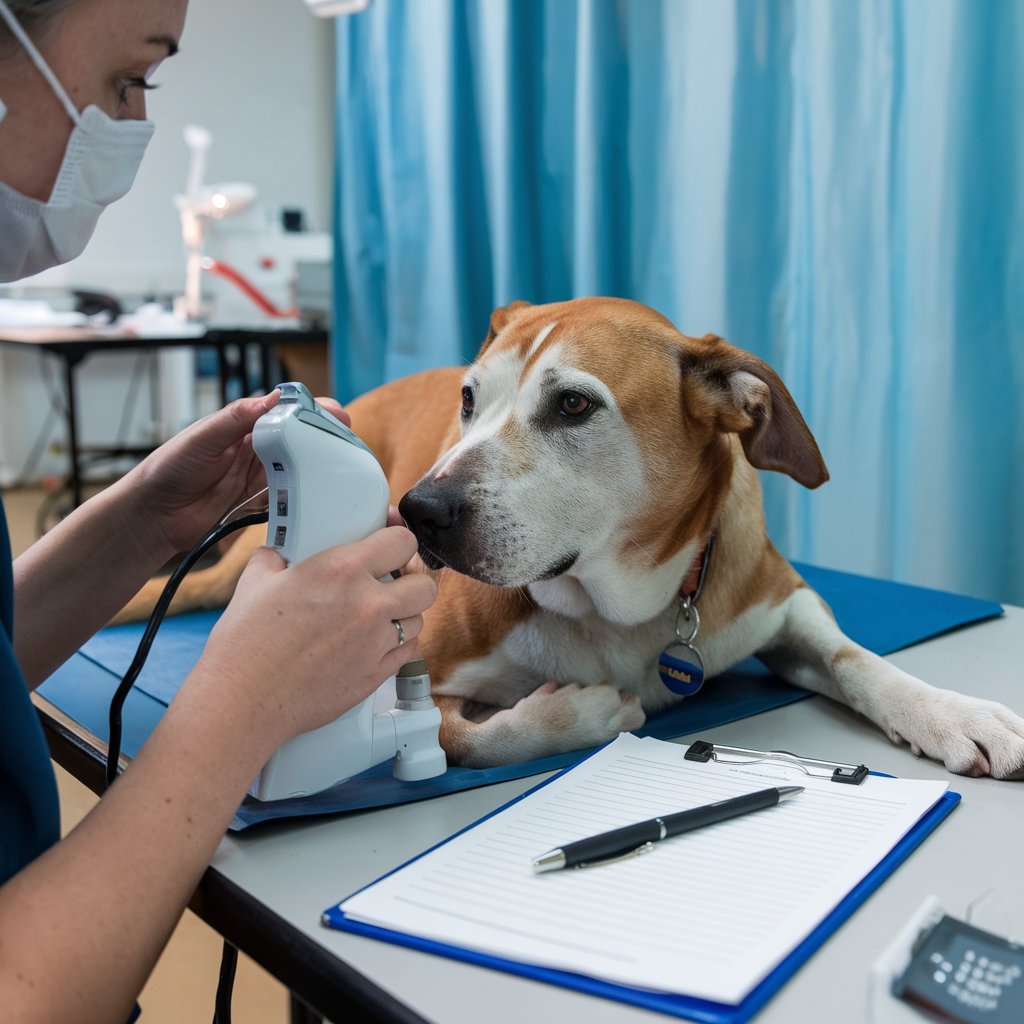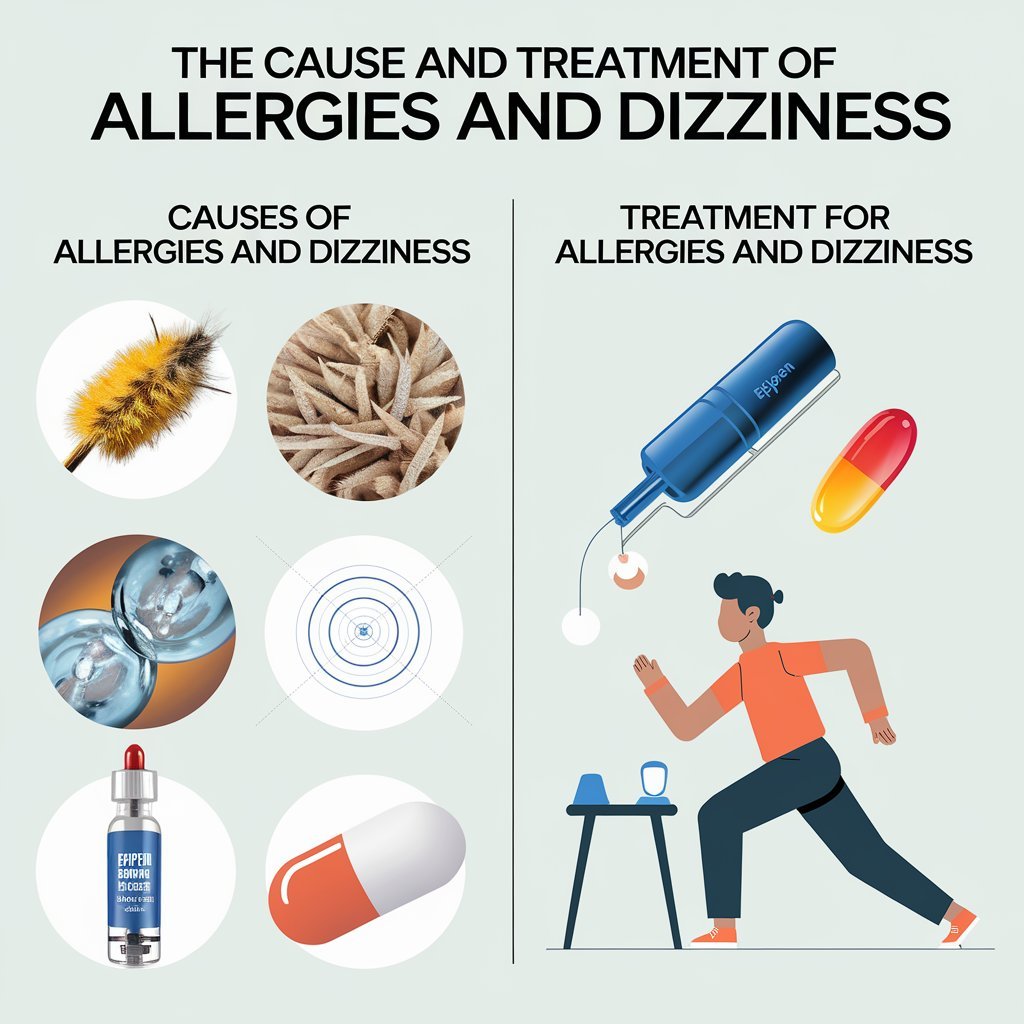The lone star tick, Amblyomma americanum, is identified by a clear white dot. You may be aware that some types of ticks can be hazardous to your health. The most well-known health threat is Lyme disease. Lone star ticks do not carry or transfer Lyme disease. These ticks have been known to transfer the Heartland virus, RMSF, and STARI.
Lone star ticks are usually found in Texas and Oklahoma, eastward across the Southern states, and up the Atlantic coast as far north as Maine. They are most commonly found in wooded areas from April to September.

The disease from a lone star tick may take days to weeks to show. A bite may also cause other diseases, which include a dangerous allergy to meat. Read further to learn about lone star ticks and the diseases they transmit.
What Does a Tick With White Dot Mean?
Once mainly found in the Southeastern United States, the lone star tick has expanded its range. It has grown in population and has emerged from central Texas and Oklahoma, eastward across the Southern states, and up the Atlantic coast as far north as Maine.
These ticks are known as “lone star” ticks because of the single white spot on the adult female’s brown body. While males do not possess this white spot, the lone star tick can feed off its victim at any stage of development: larva, nymph, and adult. Similar to other ticks, the lone star tick feeds on the mammalian blood of deer and cows. The tick will pick up a sugar called alpha-gal when it bites one of these animals.
These tiny arachnids move fast, which can be hard to track down. Their size also makes them tough to spot. A lone star tick is considered the largest female adult of the family. The male is a little smaller, and the nymphs and larvae go lesser in size compared with the former

The life cycle of a tick is about three years. They are most active from April through mid-September. These ticks like to hang out in wooded areas with dense undergrowth, especially where there are animal resting areas so they can feed off them.
Diseases Transmitted by Lone Star Tick Bites
The lone star tick does not carry the bacterium that causes Lyme disease, Borrelia burgdorferi.
A bite from this tick can cause several other diseases, including:
- Bourbon virus: People who acquire this virus may experience such symptoms as a fever, rash, body pains, fatigue, headache, nausea, and vomiting. A blood test will also be low on white blood cells and platelets. White blood cells are necessary in fighting infection; platelets ensure that the blood clots well.
- Heartland virus: Usually, within two weeks of time, such symptoms develop, like fever, diarrhea, fatigue, headache, decreased appetite, pain in muscles or joints, and nausea.
- Monocytic ehrlichiosis: Symptoms include fever, upset stomach, headache, and muscle pain.
- Rocky Mountain spotted fever (RMSF): The causative bacteria for this infection is Rickettsia rickettsii. The symptoms begin from two to 14 days of incubation, which includes fever, rash, confusion, headache, and muscle pain.
- Southern tick-associated rash illness or STARI: This disease, like Lyme disease, can be caused by fever, rash, fatigue, headache, and muscle and joint aches. The etiology of STARI is not well known.
- Another potential side effect of bites from lone star ticks is that they can create allergies to meat in humans. The germs from the bite and the alpha-gal are transmitted to the human host when a tick bites, triggering the immune system to make antibodies to the alpha-gal. You don’t make this sugar in your body, so it’s recognized as something foreign.
You can become allergic to this sugar, which leads to an alpha-gal allergy. Alpha-gal sugar exists in most foods and dishes you regularly consume, such as beef, pork, lamb, dairy, and gelatin. In case you acquire the alpha-gal allergy, you will react to these animal products.
What to Do if You Get Bitten
Here’s what to do if you find a lone star tick on your body and it’s started embedding into your skin:
- Use fine-tipped tweezers or a tool made specifically to remove ticks.
- Grasp the tick as close to the skin’s surface as you can. Pull it straight out with steady, firm pressure. Do not twist or wiggle it; that is more likely to break off the body from the mouth part, leaving the mouth in the skin. If this doesn’t work, try to remove the mouth with the tweezers.
- Dispose of the tick by flushing it down the toilet, wrapping it in tape, placing it in a sealed bag, or putting it in rubbing alcohol. Never crush a tick, especially with your fingers.
- Wash your hands and the area around the bite with soap and water or rubbing alcohol after you have removed and disposed of the tick.
- Monitor for signs of infection. If you experience a rash or a fever, contact a healthcare provider, even if it’s weeks since you were bitten by the tick.
How to Tell if You Have the Alpha-Gal Allergy
Most individuals don’t even realize they’ve been bitten until a skin rash occurs. Alpha-gal allergy symptoms vary and can even be delayed by weeks, so diagnosis is complicated.
- Alpha-gal allergy can present with gastrointestinal symptoms following:
- Dairy, impacting 10% to 20% of individuals with alpha-gal allergy
- Mammalian meat, including beef, pork, lamb, or venison
- Products made with gelatin
Other symptoms of an allergic reaction include breaking out in hives or, in extreme cases, experiencing anaphylaxis.11 The allergy might take four to six weeks to develop after the tick bite. The actual symptoms can be delayed several hours after ingesting the trigger food.
A health care professional may draw a blood sample that may reveal the alpha-gal IgE antibody, which is a marker of this allergy. Another type of challenge test can also be performed, which is administered in the care of a healthcare provider who is there if anaphylaxis is a risk.
The good news is that you can still safely consume poultry and fish. The allergy can actually resolve spontaneously over time if you avoid the off-limit foods for several years and as long as another lone star tick bite doesn’t happen.

How to Avoid Tick Bites
You can’t be 100% successful at preventing tick bites. You can still do a few things to help prevent being their next feast.
- Know where the ticks tend to hang out: You can assume there are probably ticks living there if you’re in a woodsy or brushy area with tall grass.
- Use a permethrin-based repellent on clothes and gear: Follow the instructions carefully. You can also buy pre-treated gear and clothing.
- Wear light-colored clothing: This will make the ticks more visible if they are on your clothing.
- Wear long pants: Tuck your pant legs into your socks. This will help prevent ticks from climbing up your leg under your pants.
After coming inside
Make sure to inspect all the body’s crevices: underarms, in and around the ears, belly button, between legs, around waist, and behind the knees. Check your scalp and hair. This applies to you, your children, and your pets if they were outdoors with you.
- Remove clothing safely: Immediately wash it in hot water and dry it on high heat.
- Shower within two hours of coming inside: This has been shown to decrease the risk of illness from ticks. It’s also a good time to do a tick check.




